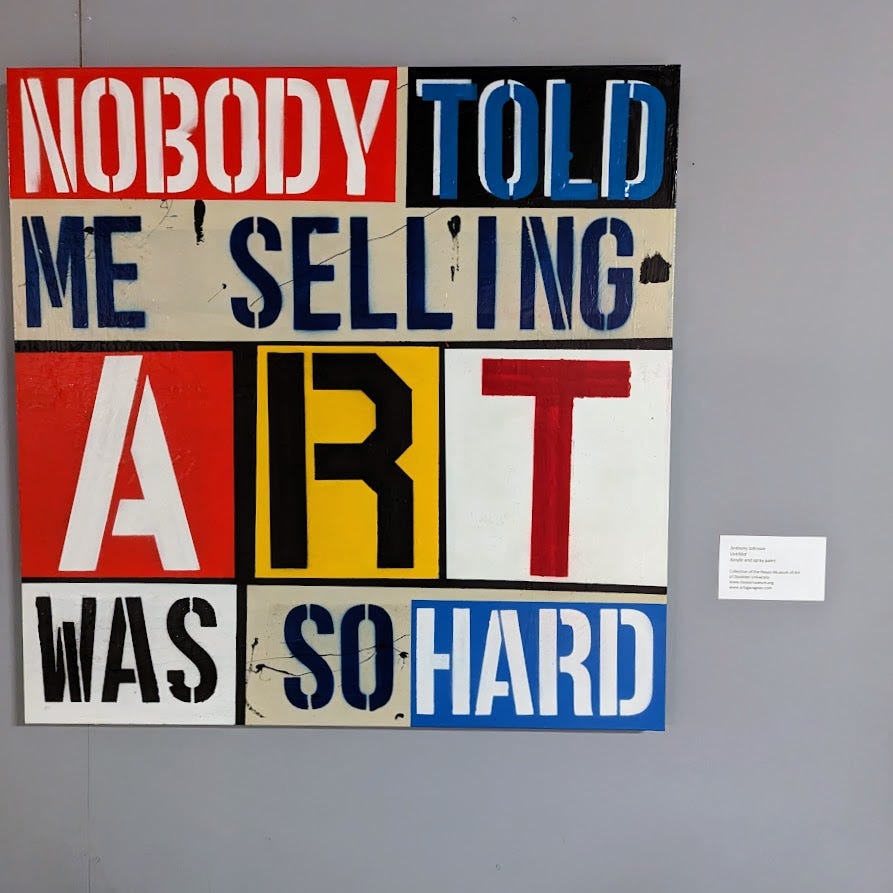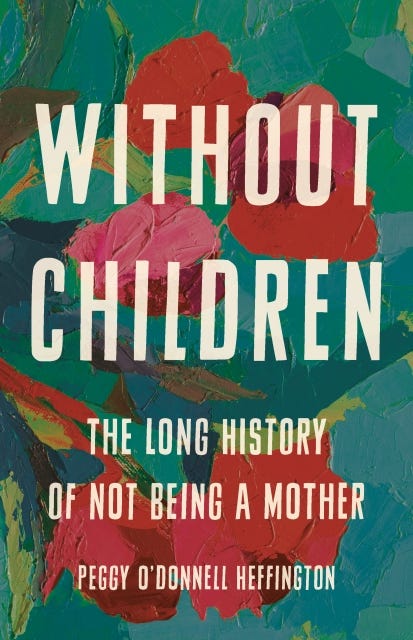Welcome to Write More! This is the monthly intentions email, which goes out the last Sunday before a new month starts. It’s a chance to fight the Sunday Scaries by thinking through your goals and intentions for your writing practice in the coming month and to reflect on your progress in the previous month.
If that sounds helpful and fun, subscribe here.
When I was in Houston in February, I spent an afternoon wandering through the Menil, my favorite museum. I walked through a really wonderful exhibit, “Boxes for Meaningless Work,” by Walter De Maria, sat down and took some notes, then walked through it again. (My notes are basically unintelligible me to now, alas. There was a lot of text in the work, and I wrote down the phrase I’ve used as a title and also “money, sex, buy my magazine, ok” which cracked me up.) I found it profoundly moving, in ways I’m now unable to articulate. (There’s a lovely write-up of it in Brooklyn Rail, if you’re interested.)
But this isn’t really about Walter De Maria, or the Menil. I’ve been thinking about the idea of the Artist Date, and how making space in your week for something fun and out of the ordinary can open your creative brain right up.

Julia Cameron, of The Artist’s Way fame, coined the term Artist Date, and I was reminded of it by Sari Botton’s writing about her recent artist dates.
As Julia Cameron describes it on her website,
The Artist Date is a once-weekly, festive, solo expedition to explore
something that interests you. The Artist Date need not be overtly
“artistic” — think mischief more than mastery. Artist Dates fire up the
imagination. They spark whimsy. They encourage play. Since art is about the
play of ideas, they feed our creative work by replenishing our inner well
of images and inspiration. When choosing an Artist Date, it is good to ask
yourself, “what sounds fun?” — and then allow yourself to try it.
So your Artist Date might be a museum trip—but it could also be a walk in a new neighborhood or a stroll through an antiques mall or anything that might “spark whimsy.”
It can be tempting to feel like you have to buckle down and get serious if you’re going to get your writing done. Who has time to just visit a museum or wander around a new neighborhood when there are word count goals to be ticked off? But I find that it’s exactly this kind of wandering that opens up new ideas, even when deadlines loom.
What sounds fun this month? What Artist Date might you try out?
So whatever your deadlines and intentions are this month, you might also think about how to make space for play—or even “mischief.”
more good things
I loved this, from Emma Copley Eisenberg (in her perfectly titled newsletter, Frump Feelings) on how to keep writing:
The biggest difference between me now and me in graduate school (besides being less of a drifter and a jerk in a way that people in their twenties are jerks) is that I’m more able now to stay in the room, that is, I’m more able to sit at the desk and stay there, even when nothing is happening. I hope to be twice or even three times better at it in eight more years.
The main difference, I tell my students (and myself), between you and Jennifer Egan or Colson Whitehead or Claudia Rankine or [insert established prolific living writer you admire here] is not, at least chiefly, that they are more talented than you. It’s that they are better at staying seated at the desk with the word document open when they don’t know what they are doing than you are. They are better at staying with the words when everything is uncertain than you are. That’s it.
It sounds woo woo, but it’s not. It’s the most practical thing in the world.
I’ve been eyeing the book Without Children: The Long History of Not Being a Mother for a little while, and it was this review in the Washington Post, which describes the book as “a feat of diligent research and, better yet, blazing argument” that persuaded me I needed to read it, stat. I’m interested in the content, of course, which speaks to my own book in progress—but when I got to the part of review explaining that “each chapter of “Without Children” is vivid and informative enough to fascinate in its own right, but by the end its strands have braided into a broader thesis,” I thought yep, I need to see how she does that.
What have you read recently that you’ve especially loved? I’m particularly looking (in nonfiction) for books that balance narrative and argument, and for books that draw an argument or a thread across chapters. (Erica Berry’s Wolfish is another recent fave in this category.)
I’d love to hear from you. You can always reply to this email, comment below, or find me on twitter (@nancy_reddy) and instagram (@nancy.o.reddy).
If you’ve enjoyed this newsletter, I’d love it if you would share it or send it to a friend.






As always, love your posts, Nancy! As for recent reading, I just finished the ARC of Prof Narvaez’s Evolved Nest and it felt like such a brave act of activism in and of itself. More soon but I highly recommend - perhaps for a future Substack? Wait, is this notes? If so, there goes my notes virginity.
Yes! I do a regular weekly artist's date and write about it here, on substack at Art Monster (emikra.substack.com)